The blockchain ecosystem is rapidly expanding, with numerous independent networks emerging. However, a significant challenge remains: facilitating communication between these disparate blockchains. This is where the Cross-Chain Interoperability Protocol (CCIP) steps in, offering the best solution for easy interaction across all blockchain networks. The main goals of CCIP are to enhance the ability of decentralized applications (dApps) to operate across multiple blockchains, improve the efficiency and security of cross-chain transactions, and support the development of a more interconnected blockchain ecosystem.
What is CCIP?
CCIP, or Cross-Chain Interoperability Protocol, is a comprehensive set of rules and technologies designed to enable different blockchain networks to communicate effectively. Think of CCIP as a translator that allows two people speaking different languages to understand each other. This protocol simplifies the process of exchanging information and assets between blockchains, ensuring a more integrated and efficient blockchain ecosystem. Here are some key features of CCIP:
- Interoperability: CCIP facilitates communication between different blockchain networks, allowing for the transfer of data and assets across these networks.
- Security: It employs strict security mechanisms to ensure that cross-chain transactions are secure and tamper-proof.
- Scalability: The protocol is designed to handle a high volume of transactions, making it scalable for large-scale blockchain applications.
- Standardization: CCIP aims to provide a standardized framework for cross-chain interactions, which can help developers build interoperable solutions more easily.
Why Do We Need CCIP?
Imagine owning digital assets like cryptocurrencies or tokens on Blockchain A but wanting to use them on Blockchain B. Without CCIP, this process is cumbersome, involving multiple steps and considerable risk. CCIP provides a streamlined, secure method for transferring assets and data between blockchains, eliminating the need for complex and risky procedures. The Cross-Chain Interoperability Protocol (CCIP) addresses these challenges by providing a framework for secure and efficient cross-chain communication. Here’s a technical dive into why we need CCIP:
1. Eliminating Siloed Networks
Problem: Blockchain networks often operate in silos, with no native mechanism for interaction with other chains. This isolation limits the functionality of decentralized applications (dApps) and restricts the flow of assets and data.
Solution: CCIP provides a set of standardized rules and technologies that facilitate seamless communication between disparate blockchain networks. By enabling cross-chain interactions, CCIP breaks down these silos, allowing for more integrated and functional dApps.
2. Secure Cross-Chain Transactions
Problem: Transferring assets between blockchains traditionally involves complex, multi-step processes that are prone to security risks, such as double-spending and replay attacks.
Solution: CCIP employs robust security mechanisms, including decentralized oracles and consensus validation, to ensure the integrity of cross-chain transactions. This minimizes the risk of tampering and ensures that transactions are secure and reliable.
3. Standardized Communication Protocol
Problem: Without a standardized protocol, developers face significant challenges in creating interoperable solutions. Each blockchain has its own set of rules and communication methods, leading to increased complexity and potential errors.
Solution: CCIP offers a standardized framework for cross-chain interactions. This standardization simplifies the development process, allowing developers to create interoperable solutions more easily and efficiently. It provides common interfaces and protocols that can be universally adopted across different blockchain networks.
4. Scalability for Large-Scale Applications
Problem: As the number of blockchain applications grows, the need for scalable solutions that can handle a high volume of transactions becomes critical. Current cross-chain solutions often struggle with scalability issues, limiting their applicability for large-scale applications.
Solution: CCIP is designed with scalability in mind. Its architecture supports a high throughput of transactions, making it suitable for large-scale applications, such as decentralized finance (DeFi) platforms and blockchain-based supply chain management systems. By ensuring that cross-chain interactions can be processed quickly and efficiently, CCIP enables the broader adoption of blockchain technology.
5. Efficient Data and Asset Transfers
Problem: Transferring data and assets between blockchains can be inefficient and time-consuming. Traditional methods often involve multiple intermediaries and redundant processes, leading to delays and increased transaction costs.
Solution: CCIP streamlines the process of data and asset transfers between blockchains. It employs message relayers and interoperability contracts to facilitate direct and efficient communication. This reduces the need for intermediaries and minimizes transaction times and costs.
6. Decentralized Oracles and Validation
Problem: Ensuring the accuracy and authenticity of data transferred between blockchains is a significant challenge. Centralized solutions are vulnerable to single points of failure and can be easily compromised.
Solution: CCIP leverages decentralized oracles and multi-party validation mechanisms to maintain the integrity of cross-chain data. Oracles fetch and relay data between blockchains, while validation processes involving multiple parties ensure that cross-chain messages are accurate and tamper-proof. This decentralized approach enhances security and trustworthiness.
7. Interoperability Contracts
Problem: Interacting with multiple blockchains requires custom logic for each network, which can be complex and error-prone.
Solution: Interoperability contracts, a key component of CCIP, define the rules and methods for interacting with other blockchains. These smart contracts handle the logic for sending, receiving, and verifying cross-chain messages, simplifying the development process and reducing the potential for errors.
How Does CCIP Work?
CCIP operates through a combination of several key components and processes designed to facilitate secure and efficient cross-chain communication:
- Oracles: Oracles act as intermediaries that fetch and relay data between different blockchains. They ensure that information from one blockchain can be accurately and securely transmitted to another. Chainlink, for instance, is a prominent provider of decentralized oracles used in CCIP.
- Interoperability Contracts: These are smart contracts deployed on each blockchain that define the rules and methods for interacting with other blockchains. They manage the logic for sending, receiving, and verifying cross-chain messages and transactions.
- Message Relayers: Relayers are responsible for securely transmitting messages between blockchains. They ensure that the data sent from one blockchain is received and interpreted correctly by the target blockchain.
- Validation and Consensus Mechanisms: To ensure the security and integrity of cross-chain transactions, CCIP uses validation and consensus mechanisms. Multiple oracles and relayers work together to validate the authenticity of cross-chain messages before they are executed.
- Token Bridges: These specific implementations of CCIP allow tokens to move from one blockchain to another. They typically involve locking tokens on the source blockchain and minting equivalent tokens on the destination blockchain, ensuring the total supply remains consistent across both chains.
Steps in a Typical CCIP Operation
- Initiation: A user or smart contract on Blockchain A wants to interact with Blockchain B, such as transferring tokens or invoking a smart contract function.
- Message Creation: The interoperability contract on Blockchain A creates a message detailing the intended action on Blockchain B. This message is signed and encrypted for security.
- Transmission: The message is passed to the relayers, which transport it from Blockchain A to Blockchain B via oracles.
- Validation: Upon arrival at Blockchain B, the message is received by the interoperability contract on Blockchain B. The contract verifies the message’s authenticity using the consensus mechanism.
- Execution: Once validated, the specified action is executed on Blockchain B, such as transferring tokens or updating data.
- Acknowledgement: An acknowledgment message can be sent back to Blockchain A to confirm the successful execution of the cross-chain transaction.
Example Use Case
Consider a decentralized finance (DeFi) application operating on multiple blockchains. With CCIP, a user could transfer assets from a DeFi protocol on Ethereum to one on Binance Smart Chain seamlessly. The process would involve locking the assets on Ethereum, relaying the transaction details to Binance Smart Chain, validating the transaction, and then releasing the equivalent assets on Binance Smart Chain.
Benefits of CCIP
- Enhanced Interoperability: CCIP allows different blockchain networks to communicate seamlessly, enabling the transfer of data and assets across blockchains for a more integrated ecosystem.
- Improved Security: By using decentralized oracles and multi-party validation, CCIP ensures cross-chain transactions are secure and tamper-proof.
- Scalability: CCIP is designed to handle high transaction volumes, making it suitable for large-scale applications like DeFi platforms and supply chain systems.
- Standardization: Offering a standardized framework for cross-chain communication, CCIP simplifies the development of interoperable solutions, reducing complexity and errors.
- Efficiency: CCIP streamlines data and asset transfers between blockchains, reducing intermediaries, transaction times, and costs.
- Decentralized Oracles: These ensure accurate and trustworthy information transfer between blockchains, enhancing the reliability of cross-chain communications.
- Token Bridges: CCIP enables seamless token transfers between blockchains by locking tokens on the source chain and minting equivalent tokens on the destination chain.
- Innovative Application Development: Developers can create versatile and innovative dApps that leverage the strengths of multiple blockchains, unlocking new possibilities across various sectors.
- Future-Proofing: As the blockchain ecosystem evolves, CCIP provides a flexible solution that ensures ongoing connectivity and functionality.
- Broader Ecosystem Integration: CCIP fosters a connected blockchain ecosystem, supporting comprehensive solutions that enhance the overall value of blockchain technology.
Final Analysis
With CCIP, the previously isolated blockchain networks can now communicate and collaborate efficiently, leading to a more cohesive and functional ecosystem. Standardizing cross-chain interactions further simplifies the development process, allowing developers to focus on creating advanced dApps without worrying about the complexities of interoperability. CCIP provides the foundation needed to support this growth, fostering innovation and enabling the development of more powerful and versatile blockchain solutions. CCIP is more than just a protocol; it is a catalyst for the next wave of blockchain innovation. By facilitating seamless cross-chain communication, it paves the way for a more integrated and dynamic blockchain ecosystem, unlocking unprecedented opportunities for developers, businesses, and users alike. Understanding and leveraging CCIP will be key to staying at the forefront of this rapidly evolving technology landscape, ensuring that blockchain networks can continue to grow and thrive in a connected and secure manner.
Whether you’re a blockchain developer aiming to build the next generation of decentralized applications or an enthusiast interested in the future of digital technology, understanding CCIP is crucial; if you’re interested in learning more about the magic of CCIP, get in touch with our expert technology team at info@optimusfox.com







 Chat with us
Chat with us